How to set up a community interest company in 2024

Establishing a community interest company (CIC) has emerged as a popular venture for entrepreneurs aiming to blend profit with purpose. With a rising public demand for businesses to contribute positively to societal and environmental issues, 2024 could be your year to set up a CIC.
Our comprehensive guide aims to explain the process of setting up a CIC and the considerations involved, so you know exactly what to expect.
What is a CIC?
A CIC is a type of business entity designed specifically for social enterprises that want to use their profits and assets for the public good. CICs are intended to operate with a business-like focus on generating income but must ensure that their activities primarily benefit the community rather than private individuals. This makes them a popular choice for social entrepreneurship.
Established under the Companies (Audit, Investigations and Community Enterprise) Act 2004, and regulated by the Community Interest Company Regulator (CIC Regulator), CICs must dedicate their activities and profits to their declared community interest.
This ensures that the company remains true to its social objectives. Unlike charities, CICs can undertake a broad range of activities, allowing more flexibility in operations and the ability to pay directors directly, which can make them more attractive to social entrepreneurs.
The importance of CICs in social enterprise
CICs play a crucial role in the social enterprise landscape. By blending a business’s operational efficiency with a clear social purpose, CICs enable entrepreneurs to address community needs through market-based solutions.
This unique structure is pivotal for projects that aim to have social, environmental or community impacts. It ensures that profits are reinvested back into the community or used to achieve social goals rather than distributed to shareholders.
The flexibility of CICs allows them to operate in various sectors – education, health care, social housing and environmental protection, to name a few – adapting business strategies to serve public interests effectively.
This adaptability encourages innovation and responsiveness to community needs, driving sustainable development. Moreover, CICs help foster trust within the community, as they are obligated to demonstrate their commitment to their social mission, making them integral to the growth of the social economy.
Registering your CIC online
Overview of the online registration process
The online registration process for a CIC involves completing a few key steps: prospective founders must choose a suitable company name, prepare a community interest statement explaining how the business will serve the community, and create articles of association that set out the governance rules of the CIC. The fee for online registration is £27.
Applicants must also complete Form IN01 to register the company and Form CIC36 to confirm their community interest objectives, both of which are submitted to Companies House. The application is reviewed by the CIC Regulator to ensure the company genuinely serves the community interest.
Once approved, the CIC is incorporated and can start its operations. This digital submission process simplifies the setup and is accessible via the Companies House website.
Required documents: CIC36 Form and Articles of Association
Two critical documents – the CIC36 form and the Articles of Association – must be submitted when registering a CIC.
The CIC36 form is crucial as it contains the community interest statement, explicitly detailing the proposed activities of the CIC and how these will benefit the community or the broader public. This form must clearly demonstrate that the CIC will best meet the community interest, and it is reviewed by the CIC Regulator to confirm compliance with the requirements of a community-focused enterprise.
In addition to the CIC36 form, the Articles of Association are required to establish the internal governance framework of the CIC. These articles set out the rules for the company’s operation, including the appointment of directors, the rights of members, and the handling of the company’s finances. Both documents are essential in ensuring that the CIC operates transparently and adheres to its social objectives.
The postal application process
Step-by-step guide to postal registration
To register a CIC via post, first, complete Form IN01 to register the company with Companies House. This form includes details about the company’s structure and proposed directors.
Secondly, complete Form CIC36, which should contain your community interest statement describing how the CIC will benefit the community.
Attach the Articles of Association, outlining the rules governing the operation of the CIC.
Send all documents along with the required registration fee to Companies House. Ensure all forms are correctly filled out to avoid delays. Once processed, you will receive confirmation of your CIC registration.
Completing Form IN01: Key sections explained
This form comprises several key sections that must be carefully completed.
Company details: Specify the proposed name of the company, ensuring it complies with naming regulations and does not include prohibited terms. Also, provide the company’s registered office address in England, Wales, Scotland or Northern Ireland.
Director(s) details: List the details of all directors, including names, addresses and dates of birth. This information is crucial as directors are responsible for the company’s governance.
Secretary (optional): If appointing a company secretary, include their details. This role can help with administrative duties and ensure legal obligations are met.
Share capital: For companies with share capital, detail the number and value of shares to be issued.
Statement of compliance: Confirm that all legal obligations have been adhered to in preparing the registration.
Submission: Address and fees
It is vital to send all necessary documents to the correct address and include the appropriate fees. For postal submissions, send your completed forms (including Form IN01 and Form CIC36) along with the Articles of Association to the designated Companies House address, which is:
CIC Regulator
1st Floor
Companies House
Crown Way
Cardiff
CF14 3UZ
The postal registration fee for a CIC is currently £35. Enclose the correct amount to avoid delays in processing your application. Payment can usually be made by cheque or postal order.
The role of Companies House, HMRC and the CIC Regulator
Several key regulatory bodies oversee the establishment and governance of CICs: Companies House, the CIC Regulator and HMRC. Each plays a distinct role in ensuring that CICs operate effectively within a legal and ethical framework.
Companies House is the executive agency responsible for incorporating and dissolving companies, including CICs. When a CIC is formed, Companies House processes the necessary incorporation documents, such as the CIC36 form. Once a CIC is registered, Companies House continues to maintain public records on the company, ensuring transparency and facilitating public trust by making the company’s details accessible to everyone.
The CIC Regulator has a specific mandate to ensure that CICs stick to their commitment to benefit the community. This body reviews the CIC36 form at the time of application to confirm that the CIC’s proposed activities meet the community interest test. Post-registration, the CIC Regulator monitors the company’s adherence to these commitments, addressing any complaints and ensuring that CICs do not deviate from their stated objectives.
HMRC’s role involves the fiscal aspects of CICs. Although CICs are not exempt from taxes, HMRC assesses their eligibility for any tax reliefs or benefits that could apply based on their activities and structure. This interaction ensures that CICs contribute appropriately to public finances while recognising their community-focused activities.
Together, these entities create a robust framework that supports the integrity and purpose of CICs, helping them to operate as sustainable businesses that prioritise community benefit over private gain.
Creating your CIC’s legal framework
Drafting your Memorandum and Articles of Association
These documents are vital as they form the legal backbone of the company.
Memorandum of Association: Includes the names and signatures of the initial subscribers (shareholders or guarantors) who agree to form the company. In the case of a CIC, the Memorandum should explicitly state the intent to operate for the community’s benefit. This declaration is essential to differentiate it from commercial companies and align it with its social objectives.
Articles of Association: These represent the more detailed governing document of the company, laying out the internal management structure and operational guidelines. They include provisions on how directors are appointed, their duties and powers, the handling of company finances and the procedures for meetings and decision-making. For a CIC, it is particularly important that the Articles include clauses ensuring that any profits or assets are used primarily for the community’s benefit. This might involve stipulating that profits are reinvested into community projects or used to improve services within the community.
These documents should be crafted carefully, with professional legal assistance, to ensure they meet all regulatory requirements and effectively capture the CIC’s mission and operational procedures.
Including mandatory clauses for CICs
Mandatory clauses are essential when drafting the Articles of Association to ensure compliance with legal requirements. These clauses are specifically designed to secure the CIC’s community-focused intent, setting it apart from other types of companies.
One critical mandatory clause is the asset lock. This clause prevents the CIC’s assets and profits from being distributed for purposes other than benefiting the community. It restricts the transfer of assets to ensure they are retained within the CIC or transferred to another asset-locked body, such as another CIC or a charity, thereby safeguarding the assets for community use.
Another mandatory provision is the dividend cap, which limits the maximum dividend that can be paid out to shareholders. This ensures that the majority of the profits are reinvested into the community or used to advance the CIC’s social objectives.
This cap is expressed as a percentage of the paid-up value of the shares, and it is set to prevent excessive personal gain from the company’s operations.
Including this clause helps maintain the balance between being a sustainable business that can attract investment and ensuring that the CIC does not deviate from its mission to serve the community interest. This constraint on dividends is a key feature that distinguishes CICs from other types of companies, underlining its commitment to community benefit over private profit.
Ensuring compliance with CIC regulations
Ensuring compliance with CIC regulations is paramount for maintaining integrity and legal status. To adhere to these regulations, CICs must undergo an annual community interest report, detailing their activities and demonstrating how they have benefited the community in line with their objectives.
This report is scrutinised by the CIC Regulator to confirm ongoing compliance with the community interest test.
Furthermore, CICs must keep accurate and transparent financial records that are available for inspection. These records should clearly show how income is generated and expended in pursuit of the community objectives.
Depending on the size and turnover of the CIC, regular audits may be required, providing an additional layer of accountability. Directors and staff should also be trained on the legal responsibilities specific to CICs. Understanding the unique constraints and requirements of operating a CIC can prevent unintentional breaches of regulation, such as improper asset distribution or failure to adhere to the dividend cap.
Moreover, it’s important for CICs to seek legal advice when amending their Articles of Association or undertaking significant operational changes to ensure these alterations are compliant with CIC legislation. Regular consultation with legal experts familiar with CIC regulations can help navigate the complexities of compliance and ensure the company continues to operate within the legal framework designed to safeguard community interests.
Special considerations for CICs
Working with vulnerable groups: Safeguarding and DBS checks
Working with vulnerable groups and individuals requires CICs to implement stringent safeguarding measures. An important aspect of safeguarding is the requirement for Disclosure and Barring Service (DBS) checks for all employees and volunteers who will have direct contact with vulnerable populations, such as children or the elderly.
DBS checks help ensure that individuals are suitable for roles involving vulnerable groups by screening their backgrounds for any past behaviours that might pose a risk. These checks come in different levels, with the enhanced DBS being the most thorough, often required for those working closest with vulnerable individuals.
Additionally, CICs must have robust safeguarding policies in place. These policies should outline the procedures for reporting and responding to safeguarding concerns, training staff on how to recognise and handle potential abuse, and maintaining a safe environment for all participants. Implementing these measures demonstrates a CIC’s commitment to responsible management and the protection of those under its care.
The public register and transparency
The public register is maintained by Companies House and helps to ensure transparency for CICs. This register is accessible to the public and includes comprehensive information about each CIC, such as the company’s name, address, directors and details of its governance structures.
Importantly, the register also holds copies of the CIC’s filed documents, including the annual accounts, community interest reports, and details of any changes in company structure or management.
This level of transparency can be advantageous as it allows stakeholders, potential donors, beneficiaries and the general public to verify a CIC’s legitimacy and understand how it operates and utilises its assets.
Access to such information promotes trust and accountability, ensuring that CICs remain committed to their social objectives. Moreover, this transparency helps prevent misuse of the structure and fosters a clearer understanding of the role CICs play in the community.
Beyond registration
Annual reporting and accounts
CICs must submit annual reports and accounts. These documents, which must be filed with Companies House, include a detailed account of the CIC’s activities throughout the year and demonstrate how these activities have benefited the community.
Additionally, the financial accounts provide a clear view of the CIC’s financial health, detailing income, expenditures and how profits have been used.
This annual submission helps stakeholders assess the CIC’s effectiveness in fulfilling its social objectives, maintains public trust by providing a regular and formal account of the CIC’s operations and impact, and proves legitimacy to regulatory bodies.
The significance of asset-locked bodies
Asset-locked bodies, such as CICs and charities, play a fundamental role in the social enterprise landscape by ensuring that assets are dedicated to public or community benefit.
The “asset lock” is a legal condition that prevents these organisations’ assets and profits from being used for private gain. Instead, these resources must be reinvested into the community or transferred to another asset-locked body if the organisation is dissolved.
This framework is significant because it builds public trust, ensuring that the assets contributed by donors, investors or public funds are used solely for the intended social purposes.
It protects the assets from being diverted away from the community and guarantees that any investment made into these organisations continues to benefit the public, even if the organisation ceases to operate.
Changing or specifying an asset-locked body
Changing or specifying an asset-locked body can ensure continued adherence to the asset-lock requirement. If a CIC decides to change the designated asset-locked body to which its assets are to be transferred upon dissolution, or needs to specify one for the first time, this must be clearly outlined in the company’s Articles of Association.
The process requires a resolution by the company’s members and may necessitate approval from the CIC Regulator to ensure the new asset-locked body aligns with the CIC’s original community or public-benefit objectives. It’s important that the chosen body also has an asset lock to legally receive and safeguard the assets.
This modification must be communicated to Companies House and included in the company’s annual reports, maintaining transparency and ensuring stakeholders are informed about where the assets will eventually be directed.
Converting to a CIC
Converting from a private company to CIC
Converting a private company to a CIC involves a specific process aimed at aligning the business with community-focused objectives. Firstly, the company must decide to make the transition through a resolution passed by its shareholders. This decision reflects a commitment to pursue social goals rather than purely private profit.
Next, the company needs to follow the standard process by preparing and submitting a CIC36 form to the CIC Regulator.
Additionally, the company’s Articles of Association must be amended to include the mandatory clauses relevant to CICs, such as the asset lock and the cap on dividends, ensuring that the company’s operations and profits are dedicated to public benefit.
Once the CIC Regulator approves the application, the company can officially operate as a CIC. This change is then registered with Companies House, marking the company’s new status and its commitment to community benefit.
Converting a charitable company to a CIC
Converting a charitable company involves a transition from charity-focused governance to a more flexible CIC structure. This structure allows for some profit distribution and easier business operations while still focusing on community benefit.
The first step is for the charity’s trustees to agree on the conversion, as it requires shifting the operational and financial model significantly.
The charity must then apply to both the Charity Commission and the CIC Regulator. This involves submitting a detailed proposal explaining how the conversion will better serve their aims, including a revised community interest statement and amended Articles of Association that comply with CIC regulations.
These documents must ensure all charitable assets remain protected and continue serving the public good, akin to the asset-lock feature of CICs.
Approval from the Charity Commission is crucial to ensure that the charitable assets are properly transferred under the new structure. Once approved, the transition helps the organisation gain operational flexibility while maintaining its commitment to serving the community.
Dissolution and conversion
Voluntary dissolution: Procedures and considerations
Voluntary dissolution may be undertaken if a CIC decides to cease operations. The procedure is governed by specific regulations to ensure that the dissolution is handled responsibly and that any remaining assets are dealt with according to the CIC’s asset lock.
The process begins with the directors of the CIC passing a resolution to dissolve the company, provided that all liabilities have been settled. Following this, the company must complete and submit a form called DS01 to Companies House to notify them of the intention to dissolve. It is crucial to inform all creditors, employees and stakeholders of the decision to dissolve, giving them the opportunity to address any claims against the company.
Additionally, as specified in the Articles of Association, the CIC’s assets must be transferred to another asset-locked body. This ensures that the assets continue to be used for public or community benefit, aligning with the CIC’s original purpose, even after dissolution.
Converting a CIC to a different legal structure
Converting to a different legal structure, such as a standard limited company or a charity, requires that the transition is smooth and compliant with the law.
The process begins with the decision-making phase, where the board of directors and shareholders (or guarantors) of the CIC must agree to the conversion. This typically involves a special resolution, which is a formal decision passed by a 75% majority vote. The resolution is crucial as it confirms the collective agreement to change the nature and structure of the company.
Once the decision is made, the CIC must notify the CIC Regulator of its intention to convert. This involves submitting a detailed proposal explaining the reasons behind the conversion, how the new legal form will better serve the company’s objectives, and the expected impact on the community interest that the CIC was originally set up to serve.
This proposal should also include a thorough plan for handling the CIC’s assets according to the new structure’s requirements, particularly noting how the asset lock will be treated if moving to a non-CIC entity.
Legal advice is highly recommended at this stage to ensure that the conversion does not inadvertently breach any of the regulations surrounding the asset lock and to help navigate the specific legal nuances of the intended new structure.
For example, if converting to a charity, it is essential to ensure that all assets continue to be dedicated to public or community benefit and that compliance with charity law is maintained.
Documentation detailing the new company structure and governance rules must be prepared for submission to Companies House. This includes revised Articles of Association that reflect the new legal form and governance practices.
Once all paperwork is in order and approved by both the CIC Regulator and Companies House, the CIC can officially operate under its new status, marking a significant transformation in its legal and operational framework.
Conclusion
CICs play an important role in today’s economy by bridging the gap between traditional businesses and charitable organisations. They drive social innovation and community development through business ventures that prioritise social objectives over profit maximisation.
CICs respond to local needs by reinvesting profits back into community projects, thus promoting sustainable development and creating jobs. Their unique model fosters trust and engagement within communities, encouraging more socially responsible business practices across sectors. In an era focused on social impact and ethical business, CICs exemplify how enterprises can effectively contribute to societal wellbeing while maintaining economic viability.
Values and challenges
Running a CIC offers valuable opportunities to make a significant social impact while facing unique challenges. One major advantage is the ability to directly address community needs through entrepreneurial initiatives, providing services or goods that contribute positively to society.
CICs also enjoy a high level of trust from the public and potential funders due to their transparent nature and commitment to community benefits, which can facilitate partnerships and funding opportunities.
However, the challenges are substantial. Balancing financial sustainability with social goals requires careful management and innovative business strategies. Regulatory compliance, including the need to fulfil specific reporting requirements and maintain an asset lock, demands meticulous attention to detail and administrative effort.
Additionally, CICs often operate in competitive markets where securing funding can be difficult without the tax advantages granted to charities. Despite these obstacles, the intrinsic rewards and community impact of running a CIC can be profoundly fulfilling.
The future for CICs
The future for CICs looks promising as societal values continue to shift towards sustainability and social responsibility. Increasingly, consumers and investors are prioritising businesses that contribute positively to society, creating a growing market for enterprises like CICs that blend social impact with business principles.
This trend is likely to spur innovation in how CICs operate and collaborate, potentially leading to new funding mechanisms and partnerships with traditional businesses and governmental bodies.
Technological advancements will also play a crucial role, enabling CICs to enhance their operational efficiency and reach wider audiences. Moreover, policy developments aimed at strengthening the social enterprise sector may offer more support and recognition, helping to integrate CICs more deeply into the economic mainstream.
As awareness of their value increases, CICs could become a more prevalent model, leading to a more inclusive economy where business success is measured not just by financial returns, but also by social impact.
Heard enough?
Elevate your financial game with our insightful eBooks! Download now and explore a world of professional knowledge. Start enhancing your expertise and achieving success today!
Get in touch with us
Read our latest ebooks
Our detailed analyses on critical business and tax matters bring our wealth of knowledge directly to you, offering enhanced clarity and understanding to excel in your profession.

How to set up a community interest company in 2024
May 28, 2024
Starting a CIC in 2024? Blend profit with purpose. Our guide details how to establish a CIC, focusing on both generating income and also benefitting the community

Starting an accounting practice in 2024: A comprehensive guide for success
March 5, 2024
Starting an accounting practice in 2024 is challenging yet promising. Here's a guide to help you navigate the process and make a lasting impact.







